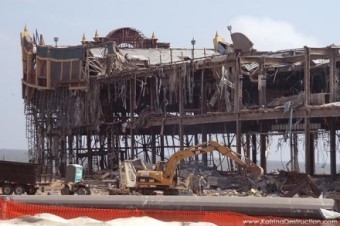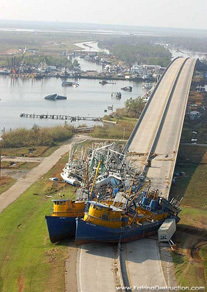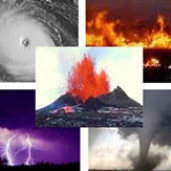
According to the National Oceanic and Atmospheric Administration (NOAA), over a typical 2-year period, the U.S. coastline is struck by an average of 3 hurricanes, 1 of which is classified as a major hurricane. And, while hurricanes pose the greatest threat to life and property, tropical storms and depressions also can be devastating.
The Pacific Hurricane Season runs from May 15th through November 30th, and the Atlantic Hurricane Season starts June 1st ending November 30th.
However, there have been instances where tropical storms and hurricanes have formed in May and December, plus typhoons and cyclones happen during other months in different parts of the world so our planet’s oceans stay active most of the year.
Hurricanes are tropical cyclones with torrential rains and winds of 74 – 155 miles per hour (120 – 250 km/h) or faster. These winds blow in a counter-clockwise direction (or clockwise in the Southern Hemisphere) around a center “eye”. The “eye” is usually 20 to 30 miles (32 to 48 km) wide, and the storm may be spread out as far as 400 miles (640 km)!
As the hurricane approaches the coast, a huge dome of water (called a storm surge) will crash into the coastline.
Hurricanes can also cause tornadoes, heavy rains and flooding along the impacted coastlines as well as far into the mainland states.

Did you know…
- the deadliest hurricane (cyclone) on record struck East Pakistan (now Bangladesh), flooding the low lying areas?! At least 500,000 deaths are blamed on the November 13, 1970 storm, with some estimates rising as high as 1 million.
- the deadliest U.S. hurricane was the Great Galveston category 4 hurricane on September 8, 1900 that caused at least 8,000 deaths on the Texas coast?!
- the costliest U.S. hurricane was Katrina (category 3) in 2005 that impacted Alabama, Florida, Georgia, Louisiana, Mississippi and Tennessee causing over $105 billion according to NOAA?! Hurricane / Superstorm Sandy is second costliest at about $50 billion.
- the 2005 U.S. season broke records with 27 named storms (previous record was 21 in 1933) and 15 hurricanes (previous record was 12 in 1969), and 2020 may break the number of named storms since we're already into the Greek alphabet as of early October. The National Hurricane Center states this cycle could last 10-20 more years similar to the above-average activity from the 1940s through the 1960s.
- 9 out of 10 hurricane deaths are due to storm surge (a rise in the sea level caused by strong winds). Storm surges can get up to 20 feet (6 m) high and 50 to 100 miles (80 to 160 km) wide!
- the northeast part (or right front quadrant) of a hurricane typically has the strongest winds and highest storm surge?! If it’s high tide when the storm slams ashore you could have serious problems.
Hurricane basics
The ingredients for a hurricane include a pre-existing weather disturbance, warm tropical oceans, moisture, and relatively light winds aloft. If the right conditions persist long enough, they can combine to produce the violent winds, incredible waves, torrential rains, and floods we associate with this phenomenon.
Each year, an average of 11 tropical storms develop over the Atlantic Ocean, Caribbean Sea, and Gulf of Mexico. Many of these remain over the ocean and never impact the U.S. coastline. About six of these storms become hurricanes each year.
In an average 3-year period, roughly five hurricanes strike the US coastline, killing approximately 50 to 100 people anywhere from Texas to Maine. Of these, two are typically “major” or “intense” hurricanes (a category 3 or higher storm on the Saffir-Simpson Hurricane Scale).
Saffir-Simpson Hurricane Scale
Hurricanes are classed into five categories based on wind speeds, central pressure, and damage potential. The chart below is the Saffir-Simpson Hurricane Wind Scale with sustained wind speeds and examples of damage (in italics) provided by NOAA:
Category 1 (74-95 mph / 119-153 km/h): Dangerous winds will produce some damage (Untied mobile homes, vegetation & signs)
Category 2 (96-110 mph / 154-177 km/h): Extremely dangerous winds / extensive damage (All mobile homes, roofs, small crafts, floods)
Category 3 (111-129 mph / 178-208 km/h): Devastating damage will occur (Small buildings, low-lying roads cut off)
Category 4 (130-156 mph / 209-251 km/h): Catastrophic damage will occur (Roofs and mobile homes destroyed, trees down, beach homes flooded)
Category 5 (> 156 mph / >251 km/h): Catastrophic damage will occur (Most buildings and vegetation destroyed, major roads cut off, homes flooded)
Naming a hurricane
Since 1953, Atlantic tropical storms have been named from lists
originated by the National Hurricane Center and now maintained and
updated by an International committee of the World Meteorological
Organization. The lists featured only women’s names until 1979, when
men’s and women’s names were alternated. Six lists are used in rotation.
Thus, the 2001 list will be used again in 2007. The only time there is a
change in the list is if a storm is so deadly or costly that the future
use of its name on a different storm would be inappropriate and the
name is retired by the WMO. Retiring a name means it cannot be reused
for at least 10 years.
In the event more than 21 named tropical cyclones occur in the Atlantic basin in a season,
additional storms will take names from the Greek alphabet.
NatGeo vid “Hurricanes 101”
This short video by National Geographic further explains hurricanes...
Additional Resources:
Preparedness and safety tips about Hurricanes, Flooding, Tornadoes and more (free USFRA ebook)


